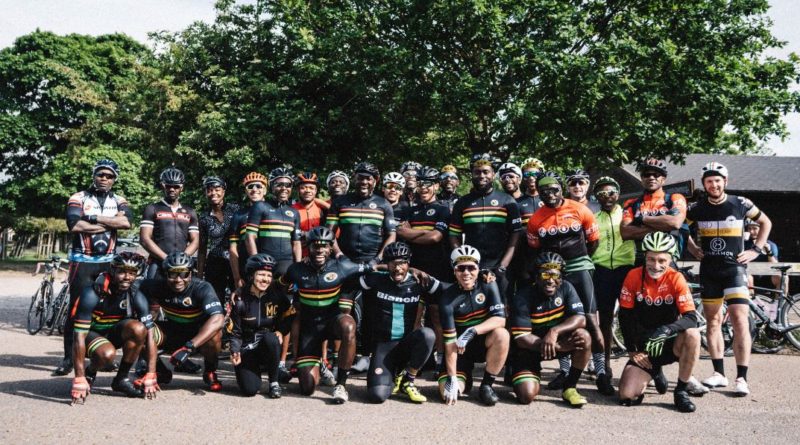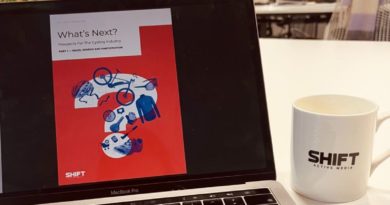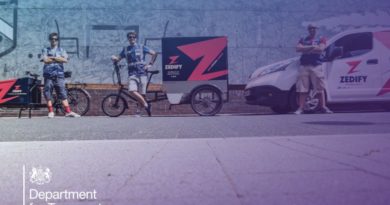‘Diversity in Cycling’ report indicates more BAME riders on the road than 5 years ago, but clubs still aren’t doing enough to appeal to minority groups
A new report titled ‘Diversity in Cycling’ is highlighting trends and recommendations surrounding the inclusion of, and provision for, BAME riders in the cycling community.
The report is based upon a questionnaire which involved 60 respondents in addition to face-to-face meetings of BAME cyclists, giving a decent overview of responses to the issues raised in the survey.
Briefly summarising the findings, the majority of respondents said they felt there are more BAME riders on the roads compared to five years ago, due to increased visibility of black riders on the cycling scene, the growing prominence of black riders at pro level, and increased accessibility to the sport.
Respondents felt there was also an increase in diversity of those taking up the sport for the first time, with factors such as charity rides, sportives and cycle to work schemes aiding accessibility. Many respondents had also joined a cycling club since taking up riding, and although many had broadly positive experiences, the survey showed a recurring theme of cycling clubs being ‘intimidating’ to novice BAME riders.
One respondent said: “Encountering stares when you turn up to a coffee spot can make it a highly uncomfortable atmosphere for a novice cyclist like myself. It feels like every move of faux pas receives extra scrutiny. This scrutiny is even stronger if you are a BAME cyclist as you’re seen as more of a curiosity.”
Some respondents specifically referenced prominent BAME riders or bike shop owners as a reason for joining a particular club: “I had a black owned bike shop on the road I was living on when I moved to Penge. I told the owner I did 40-50 miles daily just commuting, and was asked to come on a club/shop ride.”
Cycling clubs
Of the respondents who said they had joined a cycling club, two main reasons were cited: developing new skills and experience, and the social aspects of club riding. The majority of those who did not join a cycling club cited a lack of diversity as the reason why.
When asked what cycling clubs are doing well in appealing to BAME cyclists, the responses were pretty blunt: “I wouldn’t say anyone is doing well – to be honest, I’ve not come across any club that actively promotes/appeals to minorities except for Brothers on Bikes cc,” one participant said.
Another answered: “Nothing that I can see or have come across. I’m sure most clubs welcome all but I’m not sure I have seen any specific measures to appeal to BAME cyclists.”
When asked what cycling clubs can do better to appeal more to BAME cyclists, the majority of responses centred on visibility and engagement, including:
- Finding and supporting BAME ambassadors within clubs
- Engaging with riders on the road in an open and welcoming manner
- De-mystifying club culture for those new to the sport, regardless of background
- Sharing knowledge and twinning between clubs
- Signposting rides that start at different times and on different days
One respondent answered: “Using marketing and imaging that’s more reflective of the diverse culture we live in. I feel put off sometimes by not seeing ‘someone like me.'”
Generational changes
One factor, especially noticeable amongst Muslim respondents, for a lack of diversity within cycling is a generational change; this generation pay more attention to lifestyle and fitness in comparison the parents or grandparents who were more focused on establishing themselves and building careers in the UK.
One response explained: “The minority community are a few years behind with regards to embracing cycling. Many of the current cyclists are second, maybe third generation migrants of parents who have come from a country where only those in poverty cycle. Only in the past few years have ethnic minority groups in general started to consider health as a metric of quality of life.
“There are wider social dynamics at play that have a bearing on cycling participation within ethnic minority groups.”
Recommendations
As a result of the questionnaire, the report has set out a number of recommendations to promote BAME inclusion and participation in the cycling community:
- Promote visibility (websites & social media, ambassadors)
- Promote accessibility (different ride times/days, etiquette)
- Be inclusive (share knowledge, signpost diverse groups, promote pathways, schools & communities)
- Tell more than one story (challenge mainstream media/cycling media)
The survey is supported by British Cycling and includes a foreword from CEO Julie Harrington. According to Harrington, governing bodies should do all they can to confront societal imbalances: “We’d like to give thanks to Andy for the hard work he has put in to this report on diversity in cycling. Starting as a grass roots project to inform a conversation within his own cycling club and very much focused on road cycling, I’m proud to put the British Cycling name to a body of work that provides credible outputs and practical suggestions we can all play our part in implementing and support its launch.
“We are on the cusp of something transformational and I hope that my words give some sense of purpose within British cycling and our partner organisations, the likes of HSBC UK, UK Sport, Sport England, Scottish Cycling and Welsh Cycling, to serve a sport that is truly reflective of the society we live in. The world is a diverse one, so we should be too.”
The reports’ responses and recommendations can be read in full, here.



